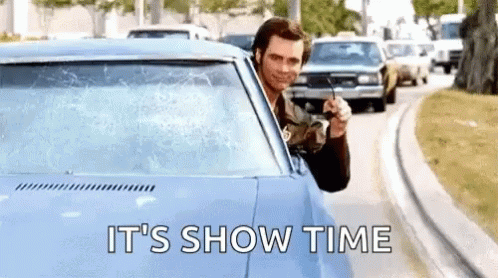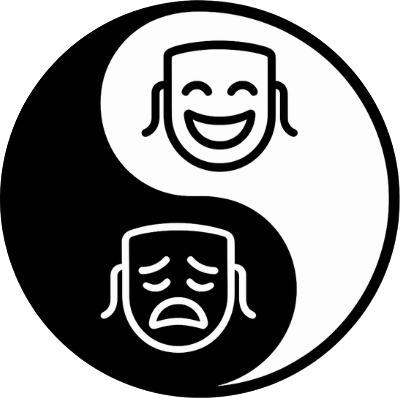Architect Success
"Analyze your life in terms of its environment. Are the things around you helping you toward success – or are they holding you back?" ~ W. Clement Stone
The Cathedral Effect is a phenomenon we've been fascinated by for some time now. It's almost absurdly intuitive, but as a result, we frequently fail to recognise its forces at play.
Backed by science; built for the stage and screen.
👊 Actors:
Get evidence-informed insights and strategies to support your performance and well-being. Join the Dojo e-newsletter tribe and make thriving your reality.
🧭 Drama schools & Production companies:
Bring pioneering, research-backed coaching into your classroom or rehearsal room. Let’s talk about supporting your actors to perform at their peak – and stay well in the process.
There's a super interesting paper[1] that covers studies on this theory, but for those who'd prefer not to leaf through the 13 pages, we got 'chu. Essentially, the researchers found that the height of ceilings influences the type of thinking done under it. High ceilings encourage the creative, abstract kind; low ceilings foster the analytical, yes/no variety.
This concept then went on to inform the much broader field of "environment design", which, ultimately, recognises and boils down to this: the spaces we inhabit matter. And if we architect them well, we can biohack additional 1%s of peak performance and holistic well-being.
* Side note: We'll be exploring environment design in relation to performance and well-being, but it can be wielded just as powerfully for habit creation/cessation. If you're interested in diving down this rabbit hole, we highly recommend James Clear's Atomic Habits.
Responding to space
From the instant we step into a space until the second we leave it for the next, we take in the environment through all our senses. That may seem the most obvious statement of the century, but, in truth, we're rarely conscious of the ongoing stimulus/response process.
Experts have estimated that we each have approximately 11,000,000 sensory receptors involved in this dance. If that isn't astounding enough, consider that around 10,000,000 of these dudes are dedicated to sight alone.[2] All this to say, the visuals of an environment have a disproportionate weight. And, it can be particularly profound to optimise for the remaining senses and 1,000,000 receptors because, for the most part, they see less of the spotlight.
Design time
We're creative homies, so the actual practice of environment design is kinda made for us. Every opportunity is an excuse to dabble momentarily as an interior designer or gallery curator.
First, we want to make a note of our spaces. List them by most commonly frequented, and commit to architecting at least the top one or two.
Next, ask, "What do I need to feel in this space?". For instance, does this space need to be the centre of calm or creativity; rest or rigour?
Then, brainstorm answers to "How can I design my space to facilitate this state?". As mentioned, what we see will be the most influential, but don't neglect the sounds, smells, tastes, and tactile experiences.
Sharing is caring, so here are three examples of the results of this exercise, current as of September 2023.
Office
- Optimising for: focus.
- Sights: Desk is clear aside from laptop, external display, and a ye olde notepad. Positioned near window so we get natural light day long (a perk of our new Brisbane base). Everything else is neatly tucked away in the drawers, bar a few encyclopedias on sport psychology that sit on the overhead shelf.
- Sounds: The same ol' lo-fi playlist through noise-cancelling headphones.
- Smells: A dab of coconut & pineapple body lotion to our hands and neck (*drools*).
- Tastes: Water and xocolatl (an Aztec recipe for hot chocolate) only.
- Tactiles: A medium-ish comfy chair to prompt us to alternate between sitting and standing.
Hotel rooms (when on gigs)
- Optimising for: sleep.
- Sights: Room kept tidy and uncluttered. We take on mission impossible and kill all the freaking light. We're talking disconnecting the TV and alarm clock, and plugging any light seepage from windows and doors.
- Sounds: The same ol' singing bowls track played at low volume.
- Smells: Smothering ourself with a subtly botanical-scented body lotion (ain't nobody got time for dry skin).
- Tastes: Water, and a bag of raw nuts or seeds for those break glass in case of emergency moments.
- Tactiles: Setting the cooling/heating system to 16-18°C if the natural temperature falls above or below.
Dressing rooms
- Optimising for: energy.
- Sights: Again, kept tidy and uncluttered to make it crystal freaking clear to our brain that it's go time. Phone is in airplane mode and out of sight. Often, there are a couple of sticky notes with quotes or cue words.
- Sounds: By game day, we'll have linked a specific playlist or song to the performance. We keep an inexpensive pair of headphones on hand to tune in pre-, during, and post-performance as required.
- Smells: We can't always turn to our beloved body lotions here (alas), so we'll use a zesty body mist instead. Orange can be a particular vibe 👌
- Tastes: Trusty ol' water, raw nuts and seeds, sometimes a cheeky banana.
- Tactiles: Costume, hair, and make-up tend to have this covered.

If this all sounds outrageously nerdy, you're right, it is (you are jammin' at the Dojo, after all). But does it work? You betta believe.
As with any behavioural process, it takes a couple of reps for the neural pathways to link the external experiences to the desired internal state. Have a play and see what rolls for you. You mightn't want to go as nitty gritty as us, or you might enjoy going even further. You do you. What matters is the intentionality. What matters is us actor folk controlling the (very few) controllables.
Love what you’re reading? Help us keep it flowing. Donations support the research, writing, and free sharing of evidence-informed tools for actor performance and well-being. Every dollar fuels our mission to make thriving a reality for actors everywhere 🔥
Citations:
